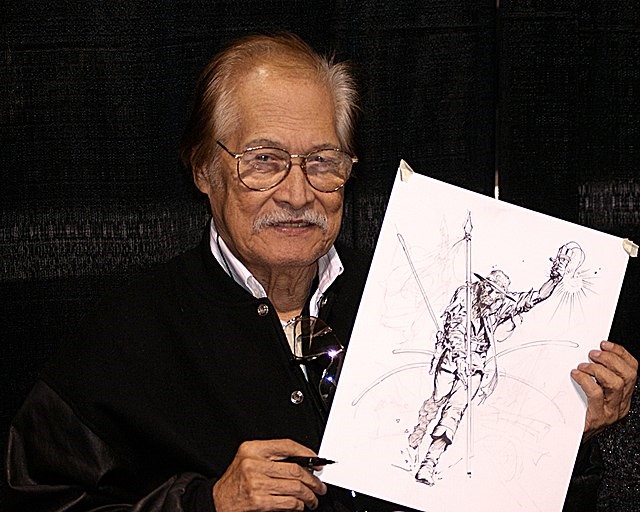


Are you sure you want to reset the form?
Your mail has been sent successfully
Are you sure you want to remove the alert?
Your session is about to expire! You will be signed out in
Do you wish to stay signed in?
Filipino Artists
The Pacific islands of the Philippines have gifted American comics with its notable talents.
When you think about island nations with great comics traditions and a definitive impact on American comics, you probably think first of Japan. But well before manga conquered the states, the American mainstream comics industry of the 1970s enjoyed a burst of new talent from an “invasion” of artists hailing from the island nation of the Philippines. Actually, calling the influx an invasion is a misnomer, since in many cases, the artists were invited to participate in the American comics scene, but the sheer number of them was certainly impressive. Of course, the Philippines had an active comics industry of its own for decades, an industry shaped in part by the ubiquitous comics brought on to the Philippine Islands by American soldiers arriving to help liberate the South Pacific nation from the Japanese in World War II. In their wake followed a number of prominent artists helping to develop an indigenous “komiks” industry, including contributions from premier talents like Nestor Redondo and Alfredo Alcala. In time, these and other gifted Filipinos would be recruited to produce artwork for National (DC) Comics, Warren Publishing, and Marvel Comics back in the states.

The American western hero Jonah Hex was co-created by a Filipino.
The Filipino talent began to arrive in 1970, when immigrant Tony DeZuñiga began to work for National Comics. DeZuñiga began with assignments on various romance, horror, western, and war anthologies—a combination that many Filipino artists coming after him would also follow—but he made a lasting mark when he co-created Western anti-hero Jonah Hex in All-Star Western #10 (1972). By then, DeZuñiga had convinced then National Comics publisher Carmine Infantino that other talented artists were awaiting discovery back in his nation of origin. With a stable of graying veterans working for him, Infantino was faced with a paucity of new talent in the early 1970s and had trouble finding gifted artists who could work for what the going page rate in American comics would pay at the time. DeZuñiga accompanied Infantino on a recruiting trip to the Philippines in 1971, beginning the recruitment of talented contributions from one nation’s comics industry to another’s.
As noted, first among the Filipino artists to make a move were Redondo and Alcala. Among his works, Redondo turned in a memorable run on Swamp Thing, and the prolific Alcala picked up a considerable fan following for his work on series like Batman and Arak. Other Filipinos followed. Alex Niño brought a distinct style to Warren Publishing’s 1984 and 1994 series. Ernie Chan’s talent for composition led to his becoming National’s principal cover artist between 1975 and 1977. Gerry Talaoc enjoyed an extended run on The Unknown Soldier. Romeo Tanghal became renowned for his inking ability and was well regarded for a lengthy collaboration with George Pérez on New Teen Titans in the 1980s. Dozens of other Filipino artists also worked in American comics at this time.
A new generation of Filipino artists continue to contribute to American comics today, including creators like Image co-founder Whilce Portacio (Wetworks) and Marvel’s Leinil Francis Yu (X-Men). However, aficionado David Roach says that most artists of the first wave of Philippine comic book artists were turned out when publishers perceived audience tastes to have changed during the 1980s. Some have remained in the field as inkers and many have gone on to other artistic chores, including a number of them signing on to work for Disney animation projects. Despite the passing of their era, their impact on American comics is considerable. As historian Chris Knowles (1999) has noted, “Here was a group of immensely talented and hard-working draftsmen who could draw absolutely anything and draw it well. They set a standard that the younger artists would have to live up to and that the older ones would have to compete with” (96).
Bibliography
Knowles, Chris. “Invasion from the Philippines: A Brief Survey of the Great ‘70s Filipino Artists at DC.” Comic Book Artist 5 (1999): 92-97.
© 2023 The Power of Comics and Graphic Novels